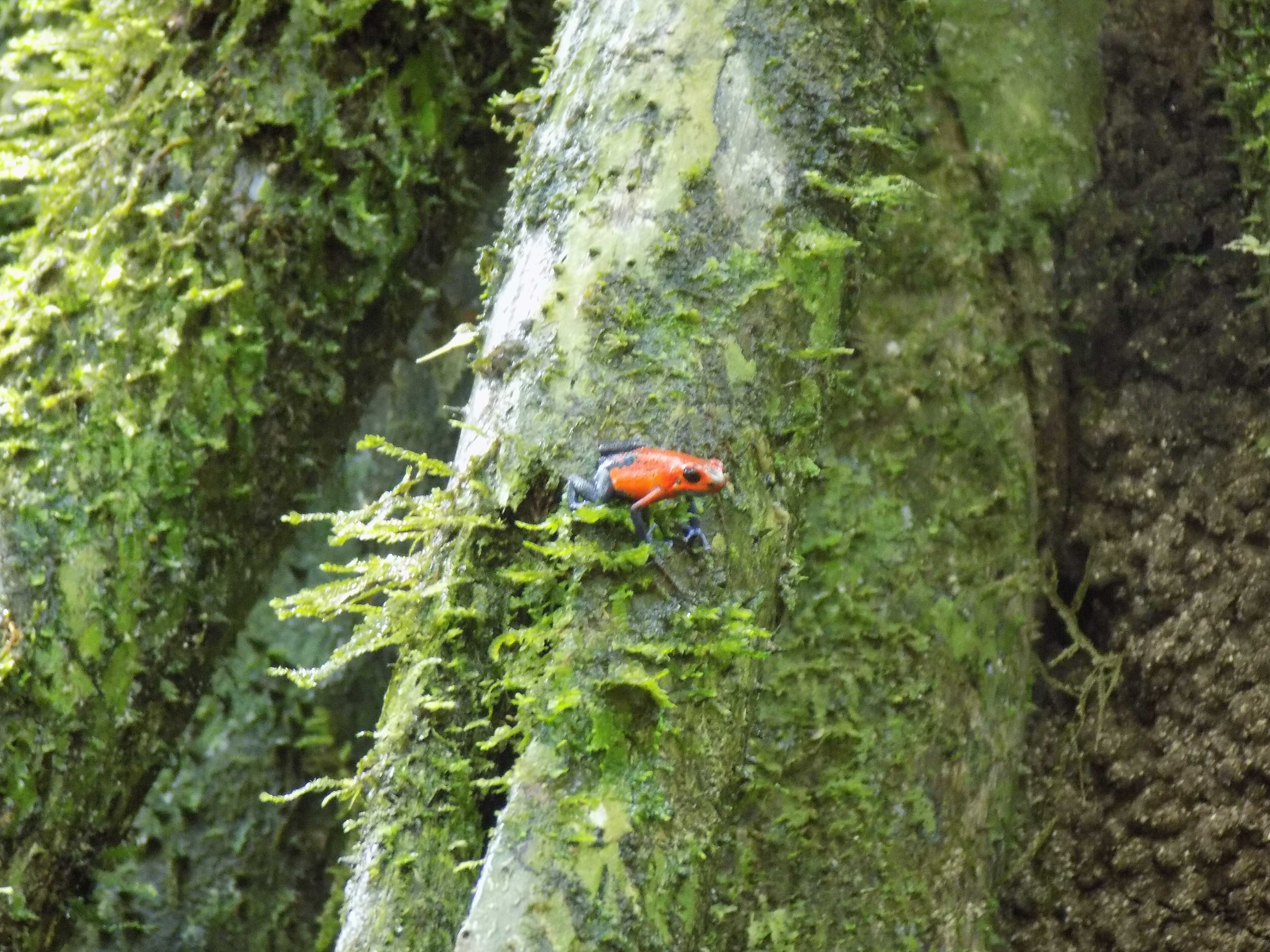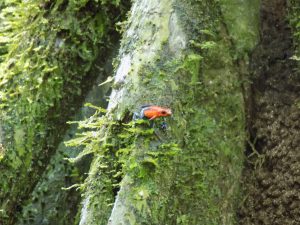
Recent study at La Selva Biological Station reveals that even tadpoles of Oophaga pumilio have poison.
In a recent study, Styonski and colleagues surveyed tadpoles, juvenile and adults of the strawberry poison dart frog to try to determine in which life stages the frogs gain their poisonous alkaloids that so efficiently repel predators. This study took place within the borders of the La Selva Biological Station in Costa Rica in 2014. In order to accomplish this task, the researchers looked at all life stages of these frogs beginning with unfertilized eggs.
Strawberry poison dart frogs have a very strong maternal contribution to rearing young. Adult females will carry their young on their backs to water-containing bromeliads (plants related to pineapples that grow in the canopy of tropical forests) and place each tadpole into a pool of water, far above the forest floor. It is essential that each tadpole gets its own pool or they will eat one another. Once all the tadpoles from a brood have been placed in separate pools, the mother returns to each pool and deposits a fertilized egg. This egg serves as nutrients for the growing tadpole. This process continues for 1-5 days.
The adults of this species can be quite poisonous to predators and people. The study conducted by Styonski and colleagues was aimed at finding the source of the poisonous alkaloids that adult dart frogs carry, but in relation to tadpoles and juveniles. The authors conducted both a chemical analysis of the different stages of development as well as a predation study to determine whether the levels of the poison within the tadpoles were enough to effectively repel predators.
Normally adult strawberry poison dart frogs acquire their poison vis their diet of mites and ants. However, since the tadpoles of this species are only consuming what their mothers bring them, it would make sense that these tadpoles would be defenseless. This, however is not the case. Styoski’s study reveals that tadpoles of Oophaga pumilio acquire their alkaloids through the unfertilized eggs that their mothers provide during their development. As they grow into the juvenile stage, the initial accumulation of alkaloids provided by their mother and additional alkaloids supplemented by their diets leaves juveniles with a higher potency than tadpoles but not as much as adults. Through this information, Styoski and colleagues determined that predators of frogs were more likely to attack the juveniles of the red-eyed tree frog(non-poisonous) than the strawberry poison dart frog.
These frogs not only provide extraordinary care for their young compared to other amphibians, but also provide them with the necessary compounds to protect themselves as they grow.
Citation:
Stynoski, J. L., Torres-Mendoza, Y., Sasa-Marin, M., & Saporito, R. A. (2014). Evidence of maternal provisioning of alkaloid-based chemical defenses in the strawberry poison frog Oophaga pumilio. Ecology, 95(3), 587-593. doi:10.1890/13-0927.1

